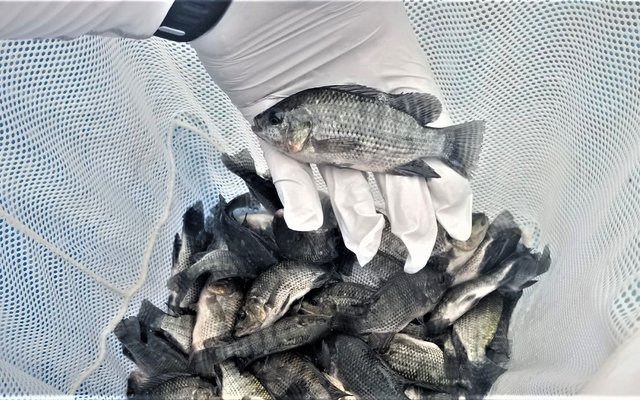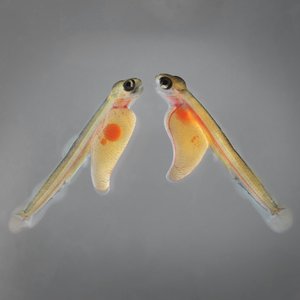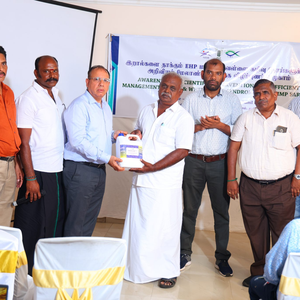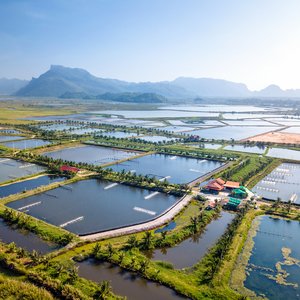Genetics plays a crucial role in increasing the resistance to major pathogens affecting aquaculture production. The recent research by Benchmark Genetics’ geneticist Sergio Vela-Aviatua, the USDA Aquatic Animal Health Research Unit and colleagues identified genetic markers that indicate resistance to Streptococcus iniae in tilapia. The discovery, combined with good husbandry practice and biosecurity measures, offers a powerful tool for preventing severe S. iniae infections in commercial farming. Hatchery Feed & Management talked with Morten Rye, director of genetics at Benchmark Genetics, to discover how tilapia farmers can benefit from this finding.
The disease
Streptococcus iniae is a Gram-positive, coccus-shaped bacterium that can cause severe infections in both wild and farmed fish and in warm and cold water. It has been reported in various geographical regions, including Asia, the Americas, the Middle East, and Oceania.
It is particularly prevalent in areas with intensive tilapia farming and can be transmitted horizontally through the water, contaminated equipment, or direct contact between fish. Stressful conditions, such as high stocking densities, poor water quality, or sudden changes in environmental parameters, can increase the susceptibility of fish to infection. The symptoms cover a range of clinical signs, including lethargy, anorexia, erratic swimming, exophthalmia (bulging eyes), skin lesions, hemorrhages, and inflammation. In severe cases, S. iniae infection can lead to high mortality rates.
The discovery
Benchmark’s research has identified genetic markers closely linked to a major QTL (Quantitative Trait Loci), a region of the tilapia genome with a profound effect on the fish’s resistance to Streptococcus iniae, and demonstrated that animals carrying these favorable markers have significantly higher resistance to the pathogen compared animals lacking these markers. “This discovery could be a game-changer for tilapia farmers facing the impact of this harmful pathogen and help them improve the health and productivity of their fish,” said Rye.
The discovery opens for marker-assisted selection (MAS) based on these specific QTL-associated markers achieving a more efficient and accurate selection of fish with increased resistance when combined with conventional methods. In a validation experiment, researchers tested the effectiveness of this approach by comparing the mortality rates of offspring groups from parents classified as either tolerant or susceptible based on their genetic marker status.
“The results were impressive, with only 1% mortality in the tolerant group compared to 73% in the susceptible group during a controlled challenge test. These findings highlight the potential of marker-assisted selection for efficiently and accurately selecting tilapia with increased resistance to S. iniae,” Rye explained.
Improved production

The use of stock combining fast growth and improved resistance to important pathogens has a significant impact on the overall sustainability of the production. “These healthier fish populations have improved survival rates, contributing to reduced economic losses associated with disease outbreaks and better animal welfare. The use of fish stocks with increased resistance to harmful pathogens like S. iniae can reduce dependence on antibiotics, lower operational costs, and decrease the risk of developing antibiotic-resistant strains of the pathogen,” Rye explained.
Additionally, healthier fish stocks have better growth performance and feed conversion ratios, leading to increased productivity and higher yields. This approach can also help minimize the environmental impact of fish farming by reducing the need for chemical interventions and antibiotics, promoting a more sustainable industry. “Offering a healthier and more sustainable product can improve the market reputation of tilapia farmers, leading to higher demand and better prices,” Rye stated.
Healthy fingerlings or broodstock are key, but other additional biosecurity measures are needed to prevent disease transmission. “Maintaining optimal water quality and appropriate stocking densities for the size and growth stage of fish is crucial to prevent stress and disease transmission. Keep equipment, tanks, and surfaces clean and disinfected regularly, and control movement of people and equipment. Regularly inspect fish for any signs of disease or stress and respond promptly to any issues that arise,” Rye said.
From research to market
Benchmark Genetics has already incorporated integrated marker-assisted selection (MAS) into its breeding and production of Spring Tilapia® fingerlings and breeders offering farmers access to tilapia with increased resistance to S. iniae.
Benchmark Genetics‘breeding program for Nile tilapia has long targeted key production traits, such as improved growth and yield. In addition, systematic work on disease resistance based on controlled challenge testing was initiated in 2014. The company is also targeting improvement to other pathogens affecting tilapia, including Streptococcus agalactiae, Francisella noatunensis, and Tilapia Lake Virus (TiLV) with work on others in the pipeline.
Benchmark Genetics Tilapia is present in various markets worldwide, with a particular focus on Latin America. The company has a significant footprint in Central America (Guatemala and El Salvador), South America (Colombia, Peru, and Brazil), as well as in Asia (Bangladesh), Africa (Zimbabwe), and the United States. The company's commitment to delivering high-quality genetics underpins an estimated annual production of approximately 200 million sex-reversed fingerlings globally.
Expansion plans
Benchmark Genetics is actively planning to expand its operations into new markets in the short to medium term, with a particular focus on Asia and Mexico. “The Asian market is the largest market for tilapia and offers tremendous potential for growth and impact on the industry as a whole,” Rye said. The company aims to bring its expertise in genetics and selective breeding to help producers in the region improve production efficiency and overall profitability.
The Mexican market also presents significant potential for growth and development. “By providing producers with access to the latest advancements in genetics and selective breeding, Benchmark Genetics can help improve the tilapia industry's success in the country. This can contribute to the overall economic development of the region, while also supporting sustainable and responsible aquaculture practices,” Rye concluded.










